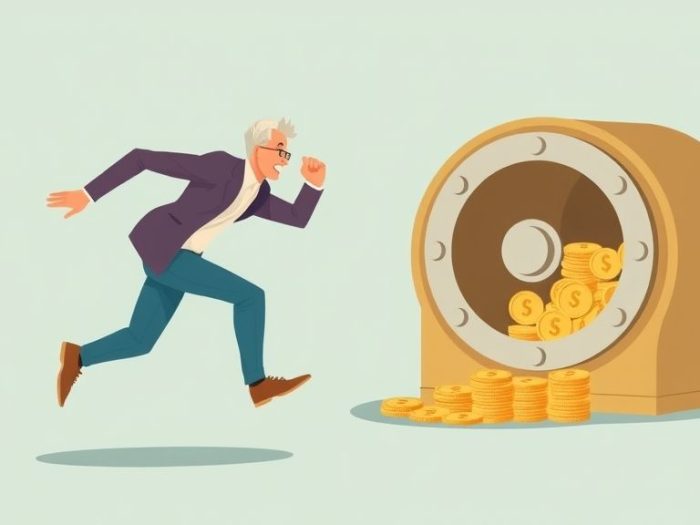Many people find themselves behind on retirement savings as they approach their 50s.
However, it’s not too late to catch up and secure a comfortable retirement. This
article provides a comprehensive guide on how to effectively catch up on retirement
savings after 50, leveraging catch-up contributions and strategic planning.
Understanding the Importance of Catch-Up Savings
Catching up on retirement savings after 50 is crucial because:
-
Time is Limited: You have fewer years to save and compound your
investments. - Healthcare Costs Increase: Healthcare expenses tend to rise with age.
-
Financial Security: Adequate savings provide peace of mind and
independence in retirement.
Key Strategies to Catch Up
1. Maximize Catch-Up Contributions
The IRS allows individuals aged 50 and older to make additional “catch-up”
contributions to retirement accounts.
-
401(k) or 403(b): Contribute the maximum regular amount plus the
catch-up contribution. -
Traditional or Roth IRA: Maximize contributions, including catch-up
contributions.
2. Contribute to a Health Savings Account (HSA)
If you have a high-deductible health plan (HDHP), an HSA offers a triple tax
advantage:
- Tax-deductible contributions
- Tax-free growth
- Tax-free withdrawals for qualified medical expenses
This is especially beneficial for future healthcare costs in retirement.
3. Reduce Expenses
Identify areas where you can cut back on spending to free up more money for savings.
- Housing: Consider downsizing or refinancing.
- Transportation: Reduce car expenses.
- Dining Out: Cook more meals at home.
- Entertainment: Find free or low-cost activities.
4. Increase Income
Boosting your income can significantly accelerate your savings progress.
- Side Hustle: Start a part-time business or freelance.
- Negotiate Salary: Ask for a raise at your current job.
5. Invest Wisely
Choose investments that offer a balance of growth potential and risk management.
- Diversified Portfolio: Invest in a mix of stocks, bonds, and real estate.
- Index Funds: Consider low-cost index funds for broad market exposure.
- Financial Advisor: Seek professional guidance on investment strategies.
6. Create a Catch-Up Plan
Develop a detailed plan outlining your savings goals and steps to achieve them.
- Set Realistic Goals: Determine how much you need to save each year.
- Track Your Progress: Monitor your savings and adjust your plan as needed.
Example Scenario
Let’s say you’re 55 and want to retire at 65.
- Maximize 401(k) contributions with catch-up contributions.
- Contribute to an HSA.
- Reduce unnecessary expenses.
- Invest in a diversified portfolio with a moderate risk tolerance.
Important Considerations
- Health: Prioritize your health to avoid unexpected medical expenses.
- Debt: Pay off high-interest debt to free up cash flow.
- Financial Advisor: Consider seeking professional financial advice.
- Flexibility: Be prepared to adjust your plan based on changing circumstances.
Conclusion
Catching up on retirement savings after 50 requires a proactive and strategic approach.
By maximizing catch-up contributions, reducing expenses, increasing income, and
investing wisely, you can still achieve a comfortable retirement. Remember to create
a plan, stay disciplined, and seek professional guidance when needed.
Related Keywords
Catch up on retirement, retirement savings after 50, retirement catch-up plan,
retirement planning after 50, save for retirement after 50, retirement catch-up
contributions, boost retirement savings, retirement income strategy, retirement
financial planning, late-in-life retirement.
Frequently Asked Questions (FAQ)
1. Why is it important to catch up on retirement savings after 50?
Catching up is important because you have less time to save, healthcare costs
tend to increase with age, and you need financial security in retirement.
2. What are catch-up contributions?
Catch-up contributions are additional contributions allowed by the IRS for
individuals aged 50 and older to retirement accounts like 401(k)s and IRAs.
3. Which retirement accounts allow catch-up contributions?
401(k)s, 403(b)s, Traditional IRAs, and Roth IRAs allow catch-up contributions.
4. What is an HSA and how can it help with retirement savings?
An HSA (Health Savings Account) is a tax-advantaged account for healthcare
expenses, offering a triple tax advantage that can be beneficial for future
healthcare costs in retirement.
5. What are some ways to reduce expenses to save more?
You can reduce expenses by downsizing, refinancing, reducing transportation
costs, and limiting dining out and entertainment.
6. How can I increase my income to catch up on savings?
Consider starting a side hustle or negotiating a salary raise.
7. What type of investments are best for catch-up savings?
A diversified portfolio with a balance of growth potential and risk management,
including stocks, bonds, and real estate, is often recommended.
8. Is it necessary to create a detailed catch-up plan?
Creating a detailed plan with realistic goals and progress tracking is highly
recommended for staying on track.
9. Should I prioritize my health when catching up on retirement savings?
Yes, prioritizing your health is essential to avoid unexpected medical
expenses that can derail your savings plan.
10. Should I seek professional financial advice?
Seeking professional financial advice is highly recommended for personalized
guidance on retirement planning and catch-up strategies.



